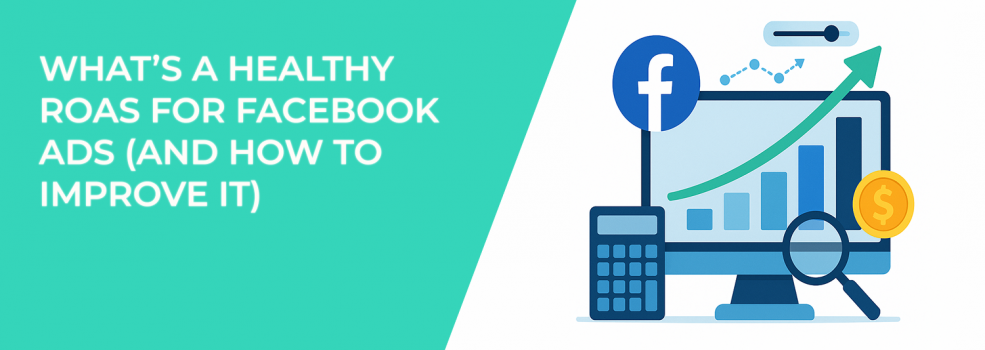When you run Facebook Ads, one of the first questions that comes up is: are they actually making money? ROAS, or Return on Ad Spend, is supposed to answer that. But what counts as a healthy ROAS? And if yours is underwhelming, how do you fix it?
Let’s unpack what a good ROAS really looks like, what affects it, and how to raise it in a way that lasts.
What ROAS Actually Tells You
ROAS is calculated by dividing the revenue from your ads by how much you spent. If you earned $3,000 in tracked purchases from a $1,000 campaign, your ROAS is 3.0. In theory, the higher the number, the better. But in practice, the context matters far more than the number itself.
Your profit margins, product pricing, and overall business model all influence what a good ROAS should be. A 2.5x ROAS might be great for one business but break-even for another. Before you aim for a "magic number," define your break-even point. Know what you need to earn for every dollar spent to stay profitable.
Keep in mind:
-
ROAS is not ROI. ROAS is revenue over ad spend. ROI factors in your net profit after all expenses, not just media spend.
-
The attribution window matters. Some buyers convert later than your current window captures.
-
LTV isn't in the ROAS equation. If you have high lifetime value, you can afford a lower initial ROAS and still win long term.
ROAS is a surface-level result. It becomes useful only when paired with strong business metrics behind the scenes.
What Counts as a Healthy ROAS?
There’s no universal answer. Some businesses are happy with 2x. Others won't scale unless they hit 5x consistently. Still, most direct-to-consumer brands consider anything in the 3x to 4x range to be solid.
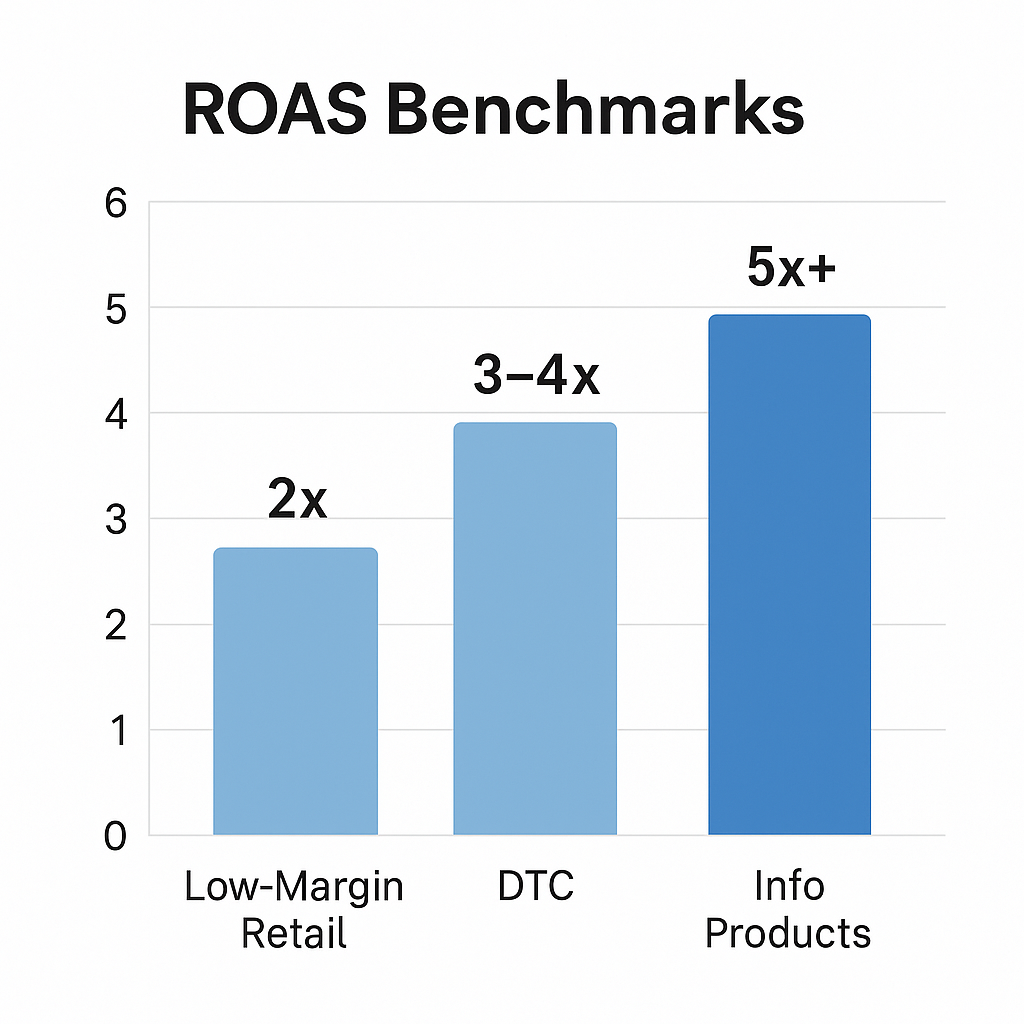
Instead of aiming for someone else’s benchmark, look at your own:
-
What’s your average product margin after fulfillment and fees? If you're working with slim margins, you need a higher ROAS to stay profitable.
-
Do customers tend to buy again after the first purchase? If your brand has repeat purchase behavior, your LTV can carry more weight.
-
How much is your customer lifetime value (CLTV) worth? The more you earn from each customer over time, the more flexibility you have with ROAS.
Once you’ve got those answers, you can set a target ROAS that makes sense for your brand. If you’re relying on new customer acquisition and don’t have much repeat business, you’ll likely need a higher ROAS to stay in the black.
For help understanding targeting and audience fit, check out Facebook Ad Targeting 101: How to Reach the Right Audience.
Why Your ROAS Might Be Low
If you’re not hitting the ROAS you want, don’t just blame your targeting or ad copy. ROAS is affected by the entire sales path — not just what’s happening inside Ads Manager.
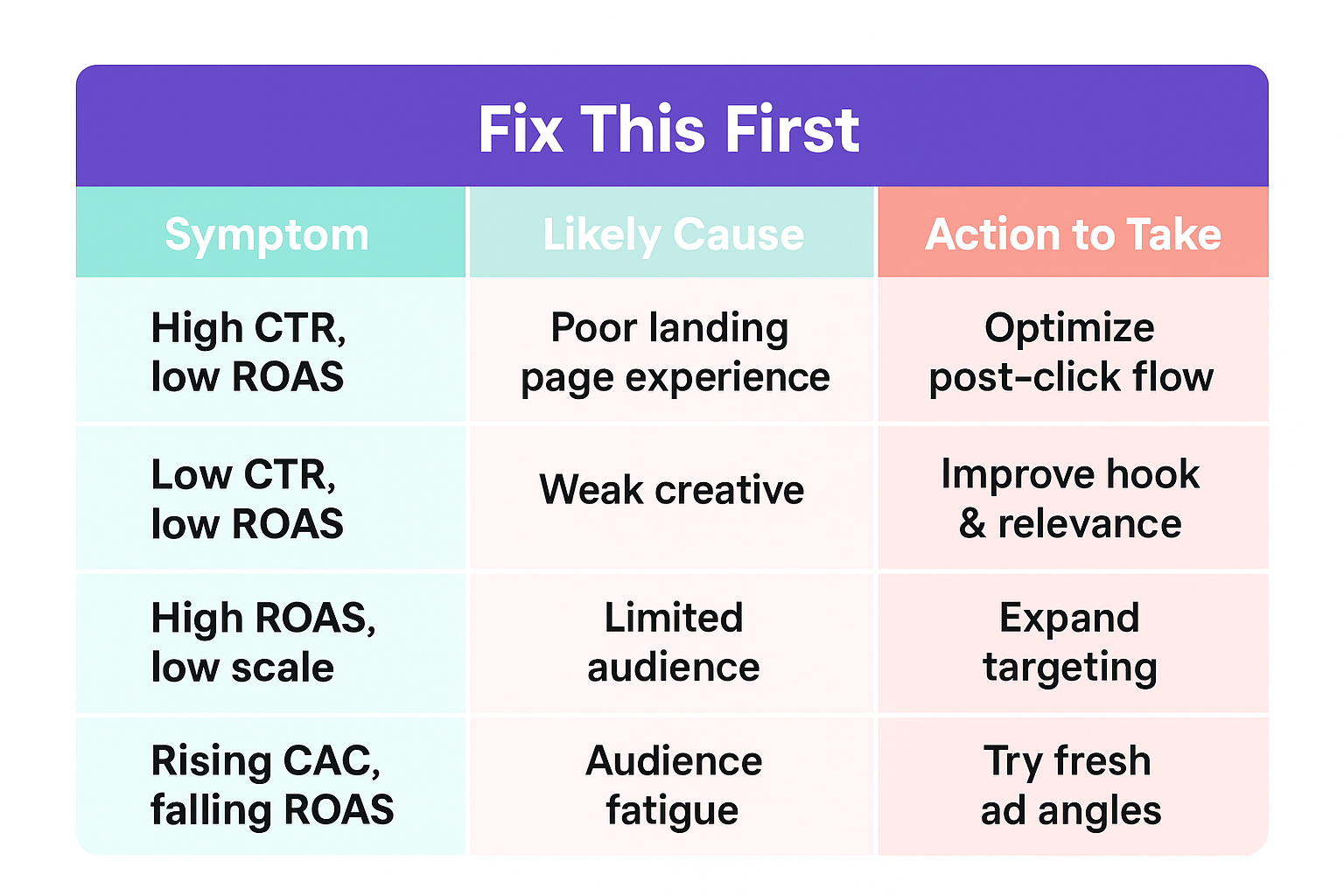
Some common reasons campaigns underperform:
-
Targeting too broad or irrelevant audiences. If you’re showing your ads to the wrong people, they won’t click — or worse, they’ll click but never convert.
-
Creative that looks good but doesn’t convert. Beautiful ads that don’t address pain points or fail to hook attention are often expensive dead weight.
-
Offers that are too weak or unclear. If your offer doesn’t give people a reason to act now, even the best targeting won’t save it.
-
Landing pages with friction or slow load times. Every extra second of loading increases bounce rates and kills conversions.
-
Poor tracking or attribution issues. If you’re not capturing all conversion data, your reported ROAS will be misleading.
Check if your ads are stuck or limited by reviewing Why You See 'Ad Set May Get Zero' on Facebook and How to Fix It.
12 Smart Ways to Improve Your ROAS
Once you've diagnosed the weak spots, here's how to move the needle.
1. Focus on Qualified Audiences
-
Use custom audiences from real engagement, not just email lists.
-
Create lookalikes based on actual customers, not random page likes.
-
Exclude past buyers if you’re running acquisition campaigns.
Smarter targeting means less wasted spend and higher intent traffic. Once you have a well-defined audience, you can focus more on messaging and creative that speaks directly to them. Avoid assuming your best customers are all the same — experiment with micro-segmentation to find hidden pockets of profitability.
2. Build Real Segmentation Into Your Funnel
-
Top-of-funnel content should grab attention with big pain points or curiosity.
-
Middle-of-funnel ads need to build trust and context (e.g., testimonials, social proof).
-
Bottom-of-funnel campaigns must create urgency or highlight irresistible offers.
Tailoring creative and objectives by funnel stage leads to more efficient spend. This approach also improves ad relevance scores, lowers your costs, and increases conversion rates across the board. When people feel like your ads “get” them, they’re more likely to act.
3. Rework Your Offers, Not Just Your Ads
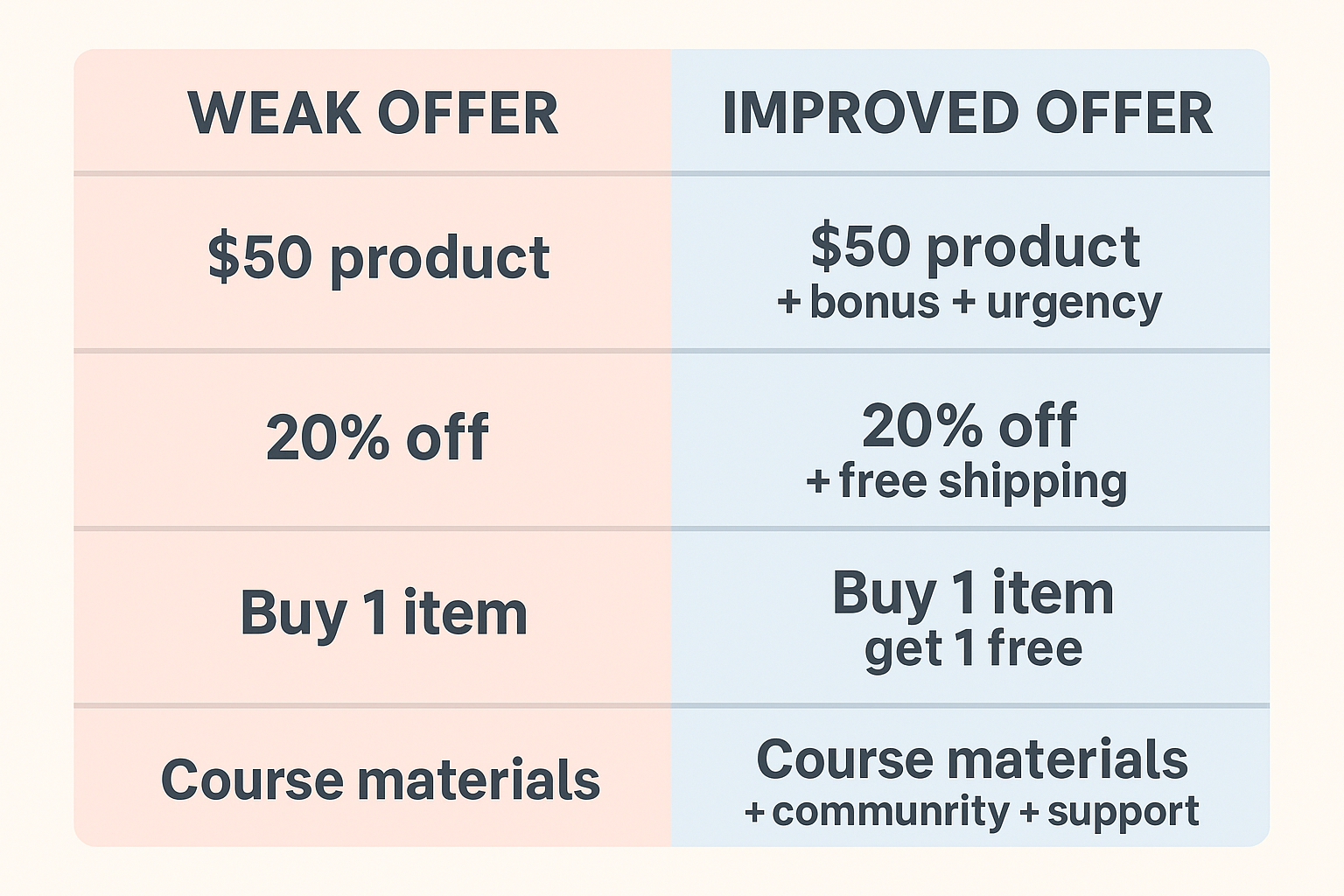
-
Stack your value with free shipping, extra bonuses, or bundled pricing.
-
Add time sensitivity with limited offers, early-bird deals, or countdowns.
-
Simplify the message. If your audience doesn’t “get” the offer in 3 seconds, it’s not strong enough.
Better offers raise conversions without increasing ad cost. A small tweak to an offer can outperform a huge increase in budget. Before launching your next campaign, test how you present your value — not just how loud you shout it.
4. Improve Landing Page Consistency
-
Match ad headline to page headline — no surprises or confusion.
-
Keep one call to action. Don’t distract users with five different options.
-
Improve mobile speed. Most Facebook traffic is mobile. If your site loads slowly, you’re paying for bounces.
When the journey feels seamless, conversions rise naturally. People buy when there’s clarity, not confusion. Keep your design simple, your message sharp, and your value obvious from the second they land.
5. Use Cost Per Add-to-Cart and Qualified Visit as Leading Indicators
-
Track cost per add-to-cart. If people are adding but not buying, the problem is pricing or checkout friction.
-
Monitor cost per engaged visit. If you’re getting a lot of clicks but no time on page, your creative or landing page might be misleading.
Fix upstream issues to protect downstream ROAS. Think of these signals like a health check for your funnel. If your costs are rising and these metrics are weak, don't wait — investigate where users are falling off.
6. Test Intent-Driven Creative Themes
-
Highlight pain points. Lead with what frustrates your audience.
-
Use emotional hooks. Social proof, humor, or urgency often out-convert logic.
-
Keep it native. Ads that blend into the feed (while standing out visually) perform best.
Your creative should talk to buyers, not browsers. The most persuasive ads focus less on you and more on your customer. Think less like a brand and more like a guide showing someone the fastest path to a solution.
7. Restructure Campaigns Around Funnel Stages
-
Use separate campaigns for cold, warm, and hot audiences.
-
Allocate budget based on funnel performance — not just engagement metrics.
-
Retarget based on behavior (product views, checkout abandons) with specific messaging.
This structure gives you visibility into what stage is pulling down your ROAS. It also allows for easier budget allocation, cleaner reporting, and faster decision-making when something underperforms.
8. Use Frequency Management to Reduce Burnout
-
Set caps to avoid showing the same ad 5+ times.
-
Rotate creatives weekly or biweekly.
-
Use dynamic creatives to test variations without cluttering your account.
Lower frequency protects your brand perception while maximizing results. Users quickly tune out repetitive messaging. If your ROAS is dipping and frequency is high, it's time for fresh creative or a new angle.
For more guidance, see Ad Fatigue on Facebook: How to Spot It Early and Fix It Fast.
9. Strengthen the Post-Purchase Flow
-
Trigger post-purchase upsells with ads or email.
-
Run win-back campaigns after 30–60 days of inactivity.
-
Build loyalty programs to turn one-time buyers into brand advocates.
Every additional dollar from a customer boosts ROAS without new acquisition costs. Treat your customers like assets, not just transactions. Retention often beats acquisition when it comes to profitability.
10. Make Better Use of Retargeting
-
Use product-specific ads for cart abandoners.
-
Remind viewers what they saw, not what you want to sell.
-
Limit retargeting windows so you’re not chasing people who clearly aren’t buying.
Relevant retargeting multiplies your ROAS impact. The more personalized the reminder, the more likely people are to return. Avoid “spray and pray” — tailor your messaging to exactly where they dropped off.
11. Strengthen the First 3 Seconds of Your Ads
-
Use bold visuals or movement to interrupt the feed.
-
Ask a question or call out a common frustration.
-
Hook curiosity — then explain benefits.
If people don’t stop, nothing else matters. Invest time in your creative’s opening moments. The first scroll impression can make or break your performance, no matter how good the rest of your campaign is.
12. Give the Algorithm Enough Room to Work
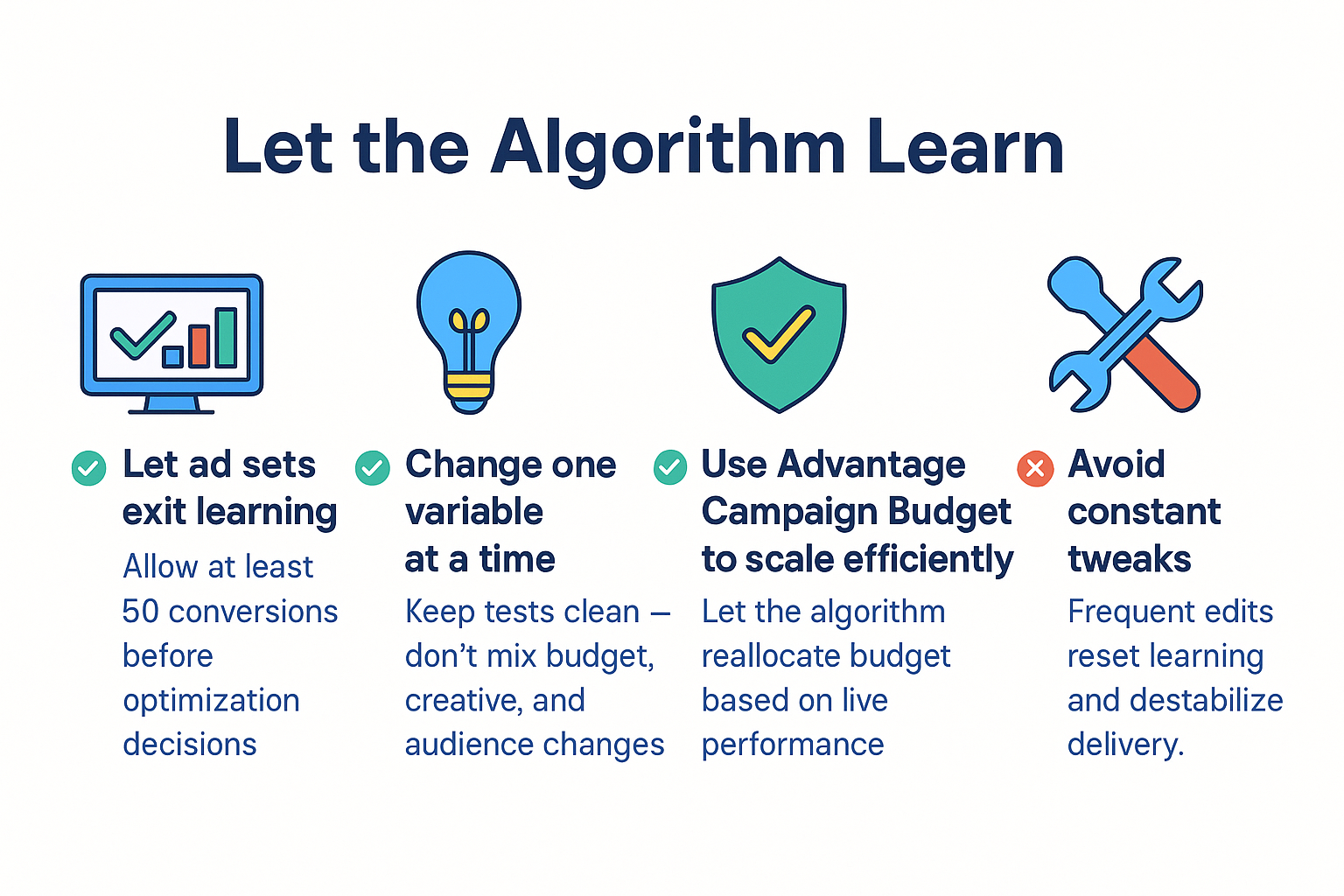
-
Let ad sets exit learning before judging them.
-
Avoid changing multiple variables at once (budget, audience, creative).
-
Use Advantage Campaign Budget when scaling stable campaigns.
When the algorithm has room to breathe, it performs better. Trying to force performance too early leads to volatile results. Patience — paired with clean campaign setups — wins more often than over-managing every click.
For practical tips on this, visit How to Finish the Facebook Learning Phase Quickly.
Final Thoughts
There’s no silver bullet ROAS target. But if you treat ROAS as a system-level output — not just a number in a dashboard — you’ll start to see clear ways to improve it.
Focus less on short-term tricks and more on building consistent systems that:
-
Bring in qualified traffic. Target intent, not just interests.
-
Convert that traffic efficiently. Fix leaks in your funnel, from ad to checkout.
-
Retain those customers long-term. Build a path to repeat purchases and loyalty.
If you're seeing good click metrics but no conversions, take a deeper look at Facebook Ads Not Converting: How To Fix It.
